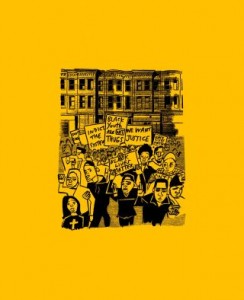The YouTube video is a clip from The Dr’s the show. The topic they are talking about is whether or not marijuana should be legalized. In the video they ask people in California (where marijuana is currently legal), their view on the legalization of all marijuana in the country. The majority of the peopled interview were pro legalization due to it medicinal and economic benefits. There is mention of how obtaining a medicinal license for marijuana is easy, basically making recreational. One of the speakers (A) goes on to say that legalization would end the war on drugs, as well as voicing how she thinks marijuana laws are unjust and extreme. Speaker (B) is a pediatrician and worries that once marijuana is legalized it will increase the chances of kids getting it. Speaker (A) response with young people smoke cigarettes, yet it’s not being questioned on illegalization. Speaker (C) adds that cigarettes are going out of style and a lot of the health problems that you get with smoking a cigarette are the same as if you were to smoke marijuana. She also states that there are laws banning smoking tobacco in certain areas and speaker (A) agrees with in order to prevent public intoxication. However speaker (A) believes that adults in a free country should be allowed to smoke a “joint”. Her view is that all marijuana use should be legal as long as the person is of age. Speaker (B) in reply to her says that if the government were to do that that they might as well legalize “drunk driving”. Another speaker (C) who is against the legalization, also states that if legalized it would harm kids (driving while intoxicated as well as harming brain development). The speaker (C) then goes as far to say that if marijuana is legalized, then so should cocaine and morphine. In response to the comparison of marijuana, cocaine and morphine, speaker (D) states they are not the same thing. Speaker (B) says she is only taking theoretically. However, speaker (A) response with if marijuana is illegal then the government should outlaw alcohol as well because it’s a drug too. Speaker (A) says that adults should have the freedom to smoke in the privacy of their own home. Speaker (C) says that in the states where marijuana is legalized, kids are getting more than before it was legal. She goes on to mention that there are studies that have proven deleterious effects that marijuana contains. While speaker (D) agrees that there are studies of deleterious affects, yet there is still the argument that THC can help reduce pain however to many people abuse the right of medicinal marijuana licenses. He does see where it can benefit some, however, the majority of people saying they need it when in reality they do not. The source teaches us that the speakers are not fully ready with all information due to the facts being repeated and them avoiding some of the questions. The audience that commented seem to see passed what they are saying they agree with speaker A who is not a doctor, then they do with those who actually are doctors (Speaker B C D). We learn that the situation of marijuana getting legalized is still a blurry topic, the see both the benefits and the harm.
This is a credible source because it allows the reader to view multiple views on the legalization of marijuana. Not only are you getting the views of doctors but you are getting the view of those who are not. Along with the speakers you have the audience who have left numerous comments on their view. The clip is originally from the show The Dr’s, a show that people watch because they trust the doctor’s views on things concerning one’s health. They do use facts in their arguments however they don’t directly state where they find them. The text does argue in what seems to be a responsible manner however at times they would cut the other off or talk over them.
A comment on the clip talks about teenagers and how they may be affected if it were to be legalized. He states that if it were to be legalized less teenagers will be able to access it. His thoughts are that when it is illegal people will have to get it from a dealer, one who does not care how old you are as long as he makes his money. However if it is legalized people will either have to show dispensaries there medicinal license or proof that they are 18 years of age. It is clear that the speaker is for the legalization of marijuana. The reader is able to see, that he does not see it as a problem for kids if it were to be legalized, through the way he says “when are these dumb people going to get this(it will not give kids easier access to marijuana by legalizing it).”
The Doctors. “Marijuana Legalization Debate .” YouTube. YouTube, 15 Aug. 2013. Web. 4 Aug. 2015.

